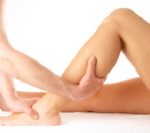Shin splin ts or Medial Tibial Stress Syndrome (MTSS) is easy to treat if the problem is caught early. If symptoms of pain along the inner border of the shin bone (tibia) goes on for too long then significant damage can occur to the muscle and bone bone coverings and the condition becomes chronic. Brighton physio, here at Sundial, James Masterson explains.
ts or Medial Tibial Stress Syndrome (MTSS) is easy to treat if the problem is caught early. If symptoms of pain along the inner border of the shin bone (tibia) goes on for too long then significant damage can occur to the muscle and bone bone coverings and the condition becomes chronic. Brighton physio, here at Sundial, James Masterson explains.
What can I do to help myself?
Rest and ice – Ice can be an extremely effective pain relief for shin splints as it acts as a local anesthetic by numbing sore muscle tissue. It also helps to slow down the inflammation and swelling process which occurs with injury.
Take down inflammation – Anti inflammatory medication may help to reduce any swelling and speed up your recovery time. Please consult your doctor before taking any medication.
Wear appropriate footwear!! – It may be beneficial to visit a specialist running shop where you can be advised about what might suit your needs. On average running shoes should be replaced when worn for between 300 and 600 miles, depending on factors such as body weight, running style and training surface. In some cases orthotics (inner soles) may be used to help abnormal loading throughout your lower limb and correct issues such as over-pronation and supination. More information on orthotics here.
What can the physio’s at Sundial do to help?
The first stages of rehabilitation may include advice to rest from aggravating activity for a while. We can give you ice packs to use of the first 2 day after the pain starts or is aggravated by the offending activity. We will help you switch to low impact exercise such as swimming and cycling and advise on how best to incorporate changes to maintain strength and fitness. Only in extreme cases is protected weight bearing necessary.

An important part of the recovery process is assessment of foot alignment and walking/running analysis to highlight any potential problems. Advice on appropriate footwear and the
In more severe cases our physio care involves laser therapy which improves healing, reduces pain and takes down inflammation. Soft tissue techniques such as massage may also help to ease tight muscles associated with shin splints or MTSS. application of inner soles may also be of benefit. We are experts in this sort of advice and work with local running shops to get the best footwear for you.
We will also advise on a home exercise plan consisting of stretching, balance and strength exercises to help too. This is an important part of your recovery along with a graded return to activity with symptom free progression.
